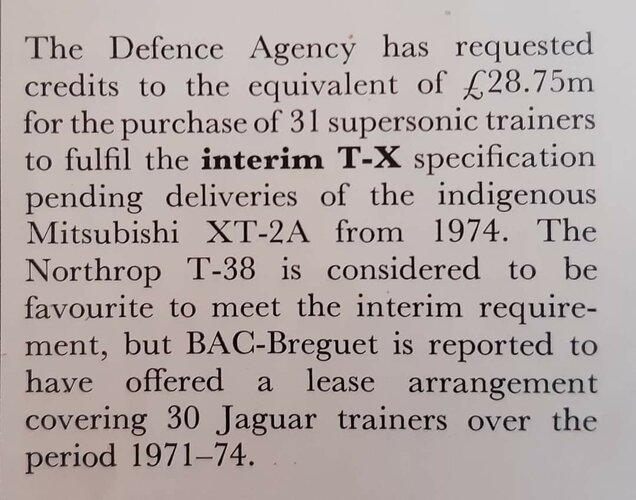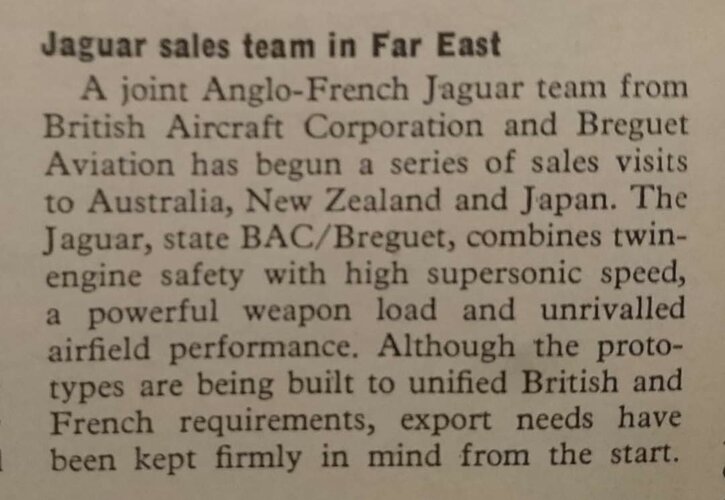D
Deleted member 2278
Guest
During the competition to replace the F-104 in European service, there was significant vacillation, particularly in Belgium, the Netherlands and Denmark, on which US competitor was preferred or even whether to buy a US aircraft at all and whether to perhaps instead procure the Mirage F1M-53. It was generally accepted that all 3 would purchase the same aircraft to achieve economies of scale but in the mid-late 70s there were various "wobbles". The overriding concern was that in the event that 1 of the 3 selected a different type, all 3 would likely have to start over as the decrease in order numbers would increase unit price, possibly prohibitively so. As a result, more than once, BAC offered the Jaguar as a less-capable but far less-costly alternative to the various US offerings. They were aided by various opposition parties and other influential concerns that favoured a lower-cost, less advanced and/or more European solution.
Ultimately, it came to nought. Below however, are some (hopefully) interesting US State Department transcripts concerning attempts to market the Jaguar in Europe and elsewhere.
Belgium:
End of the dream.....and yet....:
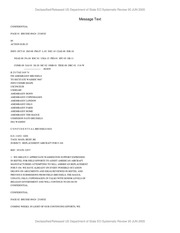
Not a serious competitor but....
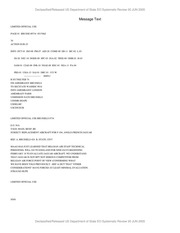
Belgian Jaguar in exchange for participation in future Jaguar exports & MRCA:
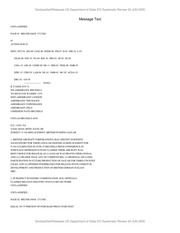
Jaguar in a hi-lo mix and "transforming" Mirages:
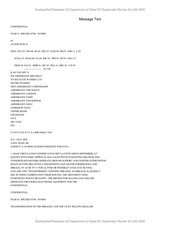
Netherlands still considering Jaguar:
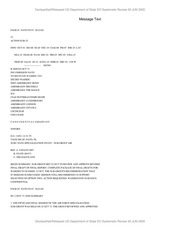
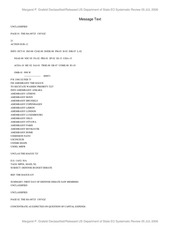
Denmark:
Some other prospects:
Egypt wanted co-production:
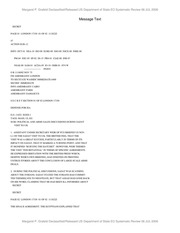
Potential Iraqi expression of interest:
Low price offer for Kuwaiti Jaguars:
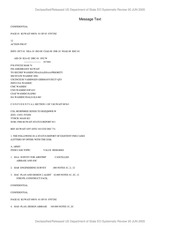
The Jaguar has beaten out the A-7 on price grounds ...so let's offer the F-14 instead?!!!
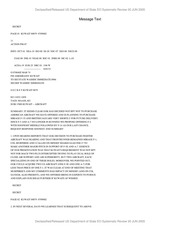
Turkish interest:
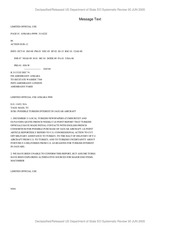
...and for fun, India refused Jaguar (I bet that sticks):
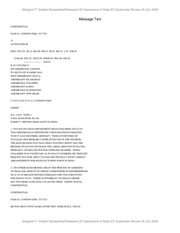
Ultimately, it came to nought. Below however, are some (hopefully) interesting US State Department transcripts concerning attempts to market the Jaguar in Europe and elsewhere.
Belgium:
End of the dream.....and yet....:
State Dept cable 1974-13675 : State Department : Free Download, Borrow, and Streaming : Internet Archive
State Dept cable 1974-13675
archive.org
Not a serious competitor but....
State Dept cable 1974-32378 : State Department : Free Download, Borrow, and Streaming : Internet Archive
State Dept cable 1974-32378
archive.org
Belgian Jaguar in exchange for participation in future Jaguar exports & MRCA:
State Dept cable 1974-133873 : State Department : Free Download, Borrow, and Streaming : Internet Archive
State Dept cable 1974-133873
archive.org
Jaguar in a hi-lo mix and "transforming" Mirages:
State Dept cable 1974-207255 : State Department : Free Download, Borrow, and Streaming : Internet Archive
State Dept cable 1974-207255
archive.org
Netherlands still considering Jaguar:
State Dept cable 1973-117064 : State Department : Free Download, Borrow, and Streaming : Internet Archive
State Dept cable 1973-117064
archive.org
State Dept cable 1975-89061 : State Department : Free Download, Borrow, and Streaming : Internet Archive
State Dept cable 1975-89061
archive.org
Denmark:
Some other prospects:
Egypt wanted co-production:
State Dept cable 1975-259009 : State Department : Free Download, Borrow, and Streaming : Internet Archive
State Dept cable 1975-259009
archive.org
Potential Iraqi expression of interest:
Low price offer for Kuwaiti Jaguars:
State Dept cable 1974-45259 : State Department : Free Download, Borrow, and Streaming : Internet Archive
State Dept cable 1974-45259
archive.org
The Jaguar has beaten out the A-7 on price grounds ...so let's offer the F-14 instead?!!!
State Dept cable 1974-45258 : State Department : Free Download, Borrow, and Streaming : Internet Archive
State Dept cable 1974-45258
archive.org
Turkish interest:
State Dept cable 1974-279965 : State Department : Free Download, Borrow, and Streaming : Internet Archive
State Dept cable 1974-279965
archive.org
...and for fun, India refused Jaguar (I bet that sticks):
State Dept cable 1975-94169 : State Department : Free Download, Borrow, and Streaming : Internet Archive
State Dept cable 1975-94169
archive.org

